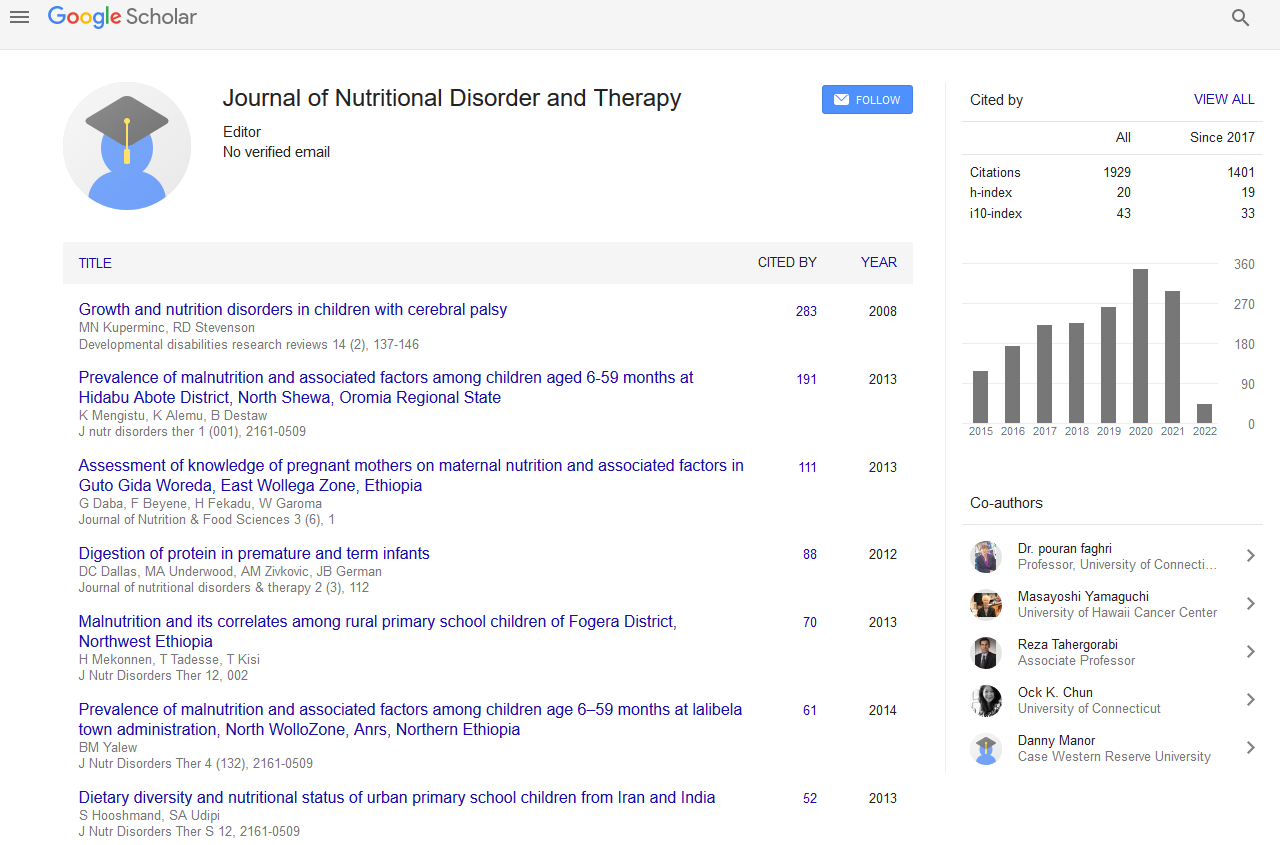Indexed In
- Open J Gate
- Genamics JournalSeek
- Academic Keys
- JournalTOCs
- Ulrich's Periodicals Directory
- RefSeek
- Hamdard University
- EBSCO A-Z
- OCLC- WorldCat
- Publons
- Geneva Foundation for Medical Education and Research
- Euro Pub
Useful Links
Share This Page
Journal Flyer

Open Access Journals
- Agri and Aquaculture
- Biochemistry
- Bioinformatics & Systems Biology
- Business & Management
- Chemistry
- Clinical Sciences
- Engineering
- Food & Nutrition
- General Science
- Genetics & Molecular Biology
- Immunology & Microbiology
- Medical Sciences
- Neuroscience & Psychology
- Nursing & Health Care
- Pharmaceutical Sciences
Sensory characteristics of pasta enriched in cladodes of prickly pear (Opuntia ficus indica (L.) Mill.) with cholesterol-lowering action
JOINT EVENT: 13th International Congress on Advances in Natural Medicines Nutraceuticals & Neurocognition & 14th International Conference on Clinical Nutrition
July 27-29, 2017 Rome, Italy
Antonella Pagliaro, Lucia Padalino, Salvatore Scandurra, Carla Sillitti, Matteo A Del Nobile and Maria Grazia Melilli
CNR - ISAFOM, Italy
University of Foggia, Italy
Posters & Accepted Abstracts: J Nutr Disorders Ther
Abstract:
Statement of the problem: The main groups of substances contained in cladodes of prickly pear (Opuntia ficus-Indica (L.) Mill) are fibers and polysaccharides, the arabinogalactans, that have interesting biological effects such as cholesterol lowering effect, hypoglycemic effect and gastroprotective and immunomodulatory activities. Being consumed daily, pasta can be used as a vehicle to intake these substances. So is necessary to study, in addition to the beneficial effects, even the acceptability by the consumer. The aim of the work was the sensory evaluation of spaghetti enriched with cladodes of prickly pear. Methodology & Theoretical Orientation: Pasta was produced with commercial durum wheat and dried cladodes at different concentrations: 0% (CTRL), 5% (1) and 10% (2) w/w. On the fresh and dried pasta after cooking, were conducted sensory analysis through a panel group, cooking quality analysis and the color indices L*, a*, b* were evaluated by Minolta colorimeter, CR 400. Findings: Sensory analysis on fresh cooked pasta show a significant difference among the pastas enriched with cladodes and CTRL. Increasing concentration of cladodes the overall quality of the pastas decreased, but remaining in an acceptable range (values >6.25). These differences were reduced after drying. There are no significant differences in values of taste and odor among CTRL and the two pastas �??1�?� and �??2�?�. Cooking quality analysis show that the swelling index did not change in the pastas �??1�?� and �??2�?� vs. CTRL, while the cooking losses increased by increasing the concentration of the cladodes. However the yellow index of pastas �??1�?� and �??2�?� increased vs the CTRL. Conclusion & Significance: The first results show a potential use of cladodes for the realization of a nutraceutical and functional pasta. Other studies are necessary to improve rheological characteristics of these products by maximizing the arabinogalactans content.
Biography :
Antonella Pagliaro is a PhD student in Health Food Innovation and Management of Foggia University. She works at CNR-ISAFOM in Catania. She has a graduation degree in Biological Science (2012) and a Master’s degree in Health Biology (2014). Now she is working on new types pasta that have the potentiality to decrease cholesterol and fight obesity, using different cultivars of durum wheat, added with biomolecules extracted from typical Sicilian germplasm and using mixture of other cereals, rich in β- glucans. The project wants to solve technological problems to obtain the new types of pasta, evaluating the effect of the addition on the rheological properties of the dough, the organoleptic properties of fresh and dry pasta obtained and the nutraceutical properties of the final products.
Email: antonella.pagliaro@isafom.cnr.it antonella.pagliaro@unifg.it


